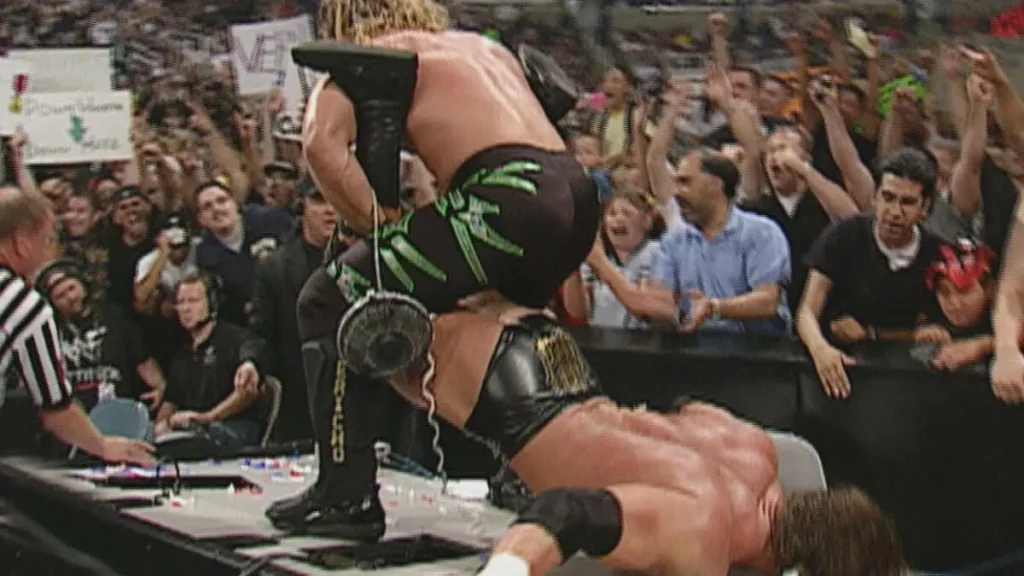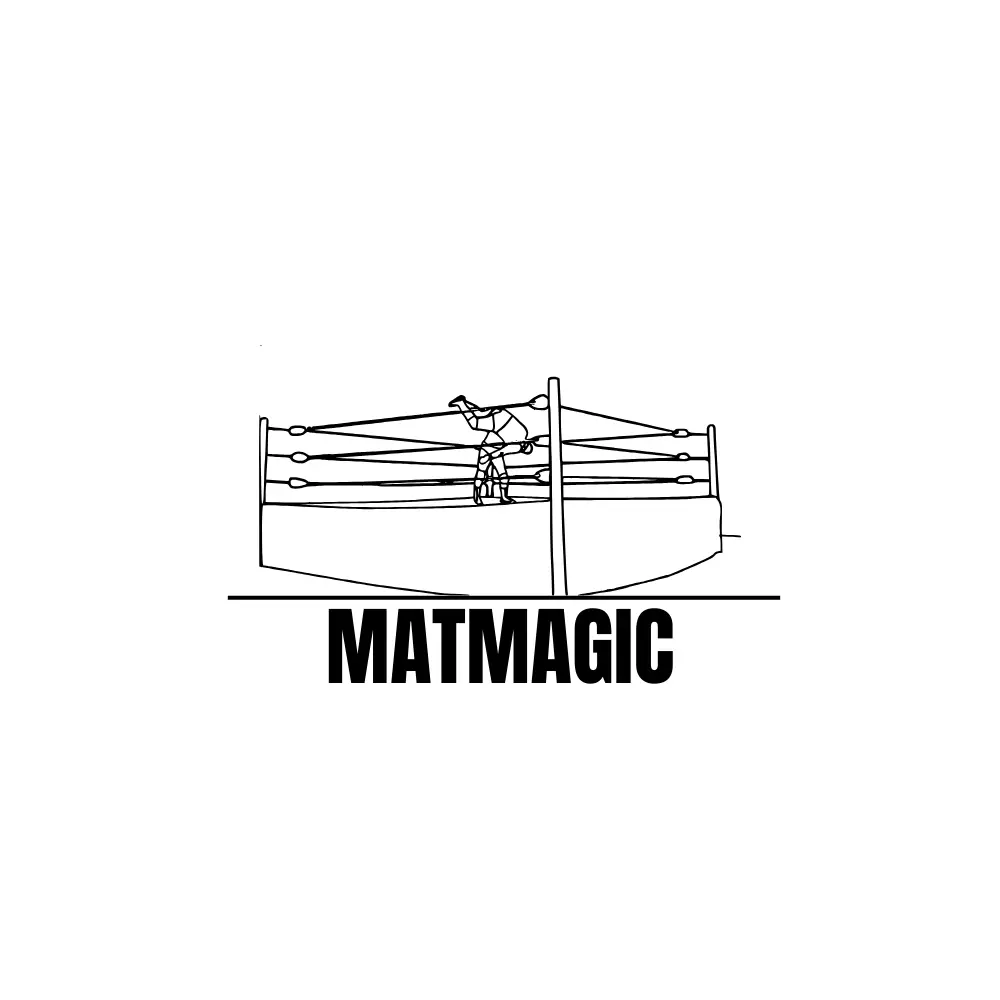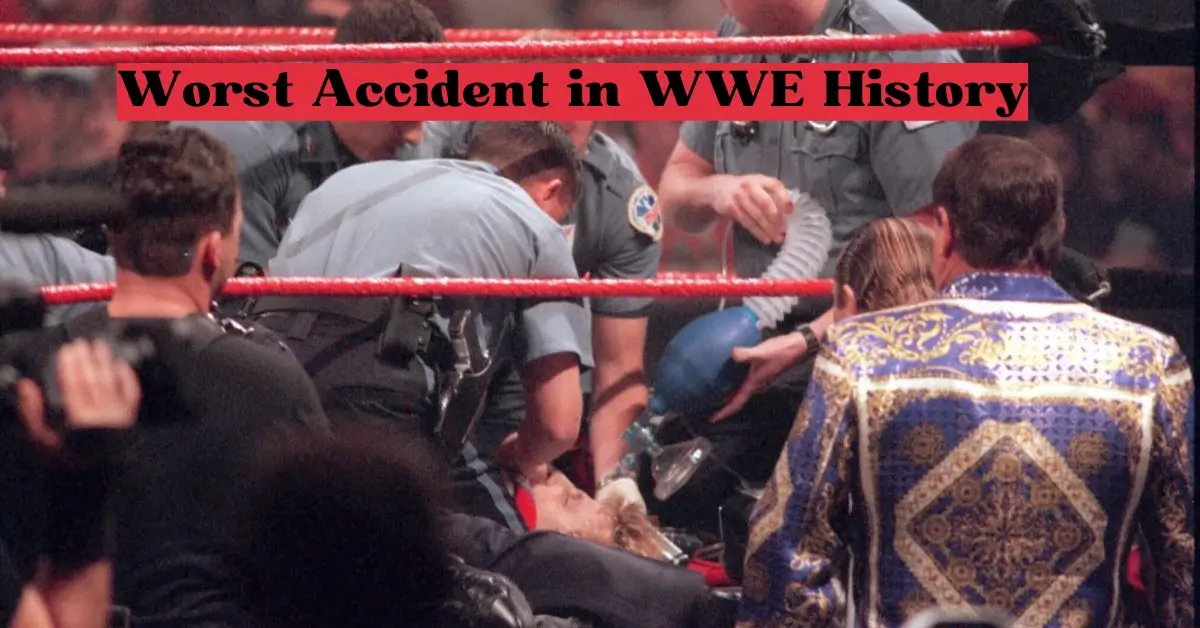When WWE comes to mind, it’s likely you imagine spectacular aerial maneuvers and supremely charismatic individuals, both defining features of this worldwide entertainment spectacle. However, the physical nature of pro-wrestling implies that mishaps are not just possible, but occur, with several so critical they have permanently etched themselves into the annals of the sport. The most tragic event in WWE’s annals serves as a grim warning of the dangers these wrestlers encounter, and a crucial turning point that has the potential to alter careers and, sometimes, transform lives irrevocably.
The Accident at Over the Edge 1999
You might know it as the worst accident in WWE history, an event that profoundly shook the wrestling world and forever changed safety measures in the industry.
Owen Hart’s Incident
On May 23, 1999, at the Over the Edge pay-per-view event, the unimaginable happened. Owen Hart, performing as the Blue Blazer, was set for an elaborate entrance that involved him descending from the rafters of Kansas City’s Kemper Arena. A tragedy struck when the harness system malfunctioned, causing Hart to fall approximately 78 feet into the ring.

Immediate Aftermath
In the immediate aftermath, emergency medical staff rushed to the ring, attending to Hart in front of a live audience, none of whom expected to witness such a shocking event. Hart was quickly transported to a nearby hospital, but the injuries from the fall proved fatal. The pay-per-view event continued, although the subsequent matches were conducted under a somber veil, with both the performers and the fans in attendance clearly affected by the tragedy.
Other Notable WWE Accidents
You’ve likely heard about the worst accident in WWE history, but there are more instances that have left both wrestlers and fans in shock. Here’s a look at some of the significant mishaps that have occurred inside the ring and during elaborate stunts.
In-Ring Injuries
- Triple H’s Quad Tear: Considered one of the most severe in-ring injuries, Triple H tore his quadriceps muscle during a tag team match. The injury was sustained when he was put into the Walls of Jericho on the announce desk, sidelining him for eight months, impacting his illustrious career.

- Bret Hart’s Career-Ending Concussion: A miscalculated kick from Goldberg at Starrcade 1999 resulted in a career-ending concussion for Bret “The Hitman” Hart. This incident is often remembered for the severe impact it had on Hart’s health and career.

Stunt Mishaps
- Joey Mercury’s Facial Injury: During a tag team ladder match at Armageddon in 2006, Joey Mercury suffered a horrific facial injury. A ladder was catapulted into his face, resulting in multiple nasal fractures and a severe laceration.
- The Undertaker’s Near-Disaster at WrestleMania: WrestleMania 25 saw a chilling stunt mishap when The Undertaker dove out of the ring, nearly landing on his head. This moment left fans holding their breath as they witnessed the Deadman come close to a catastrophic injury.

These moments underscore the unpredictability and risks wrestlers take to entertain fans, spotlighting the physical sacrifices made for the sport.
Legacy and Memory
The worst accident in WWE history has left an indelible mark on the sport, influencing both tributes and public perception. This section delves into the lasting impact and the evolution in how we view professional wrestling.
Tributes to Fallen Wrestlers
After tragic in-ring events, the WWE community often comes together to honor those who’ve been injured or lost. For example, when a superstar gets seriously hurt, you might see their fellow wrestlers wearing armbands or T-shirts with the injured superstar’s logo, showcasing solidarity and support. These gestures serve as a poignant reminder that beneath the bravado, there’s a real human vulnerability.
Changes in Public Perception
The gravity of the worst accidents tends to shift how you, the fans, and the general public view professional wrestling. Incidents like Droz’s career-ending injury have spurred discussions on athlete safety and the measures taken to protect the performers. Over time, these accidents have led to increased scrutiny and evolved safety protocols, reflecting a change in how the industry prioritizes wrestler well-being.
Worst Accident in WWE History
Industry Response and Safety Reforms
In the wake of the worst accident in WWE history, the industry has taken significant steps to prevent similar incidents, ensuring your favorite athletes are safer in the ring.
Enhanced Training Programs
WWE Performance Center: To equip performers with heightened awareness and skills, WWE expanded their training facility, the Performance Center. Here, wrestlers receive comprehensive in-ring training, fitness coaching, and instruction on injury prevention, creating a robust foundation for safety.
Onboarding Process: New hires undergo a thorough orientation emphasizing safe wrestling techniques and emergency responses. This includes simulated scenarios to prepare them for live events.
Ring Equipment Upgrades
Ring Modifications: Following accidents, WWE invested in improving the ring itself, including better padding and shock-absorbing features to reduce the impact on performers’ bodies.
Environmental Controls: Enhanced staging equipment and more rigorous safety checks ensure that the entrance and surrounding areas are secure, minimizing the risk of pyrotechnic malfunctions or structural failures.
Overview of WWE Safety Measures
In the wake of the worst accident in WWE history, it’s clear that safety measures are a cornerstone to protect both performers and fans alike. Here’s how WWE ensures the wellbeing of its superstars during the high-octane events you love.
Protective Policies
WWE Superstar Wellness Program: This initiative includes regular medical tests and screenings to monitor the health of the athletes. Wrestlers undergo comprehensive physical exams that cover cardiovascular health, brain function, and musculoskeletal condition.
In-Ring Safety Training: Wrestlers receive training on how to execute moves safely and protect themselves and their opponents from injury. Techniques to fall correctly and minimize impact are emphasized.
Emergency Protocols
On-Site Medical Staff: Every WWE event has a team of trained medical professionals on standby, ready to respond to any incidents. This squad includes physicians, paramedics, and athletic trainers with specialized emergency response experience.
Quick Response Plans: Clear procedures are outlined for various scenarios, ranging from minor injuries to critical emergencies. When a situation arises, the WWE staff is well-prepared to take immediate and appropriate action, ensuring the fastest and most effective response possible.
FAQ
What was the saddest death in WWE history?
Owen Hart’s death is something that took place in the most tragic of circumstances
Which wrestler broke his neck?
Big E had to be stretchered off, and he later announced that he fractured his C1 and C6 vertebrae
What WWE star died at 36?
Bray Wyatt died at the age of 36,
I hope you liked this Post about Worst Accident in WWE History
Let us know what you think about it in the comments.






